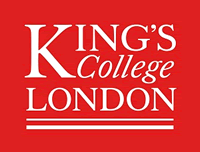About the Project
The aim of this project is to develop the next generation tools for advanced cardiovascular magnetic resonance (CMR) perfusion imaging. Novel CMR imaging sequences will be designed and implemented for both qualitative and quantitative perfusion imaging. This work will also involves the development of novel quantitative CMR reconstruction techniques. These new methods will be validated using our unique perfusion phantom and in patients.
Coronary artery disease is the leading cause of death worldwide and accounts for ~7 million deaths per year [1]. CAD occurs when part of a coronary artery develops atherosclerosis, which results in reduced blood supply to the heart muscle and myocardial ischemia.
Catheter-based X-ray coronary angiography has been considered the gold standard technique for the diagnostic of significant CAD for many years. However, this technique is invasive, associated with ionizing radiation and numerous studies have demonstrated the superior prognostic value of functional tests for the detection of ischaemia. CMR perfusion imaging is a non-invasive, radiation-free technique which enables diagnostic of myocardial ischemia with high accuracy [2]. In this technique, images of the left ventricle are acquired during the first-pass of an MR-contrast agent injected intravenously. Contrast uptake in areas of regional myocardial ischemia is delayed and reduced, leading to lower signal intensity in CMR perfusion images. This technique has been well validated against fractional flow reserve (FFR), a physiological index of significant CAD [3], and PET [4]. Clinically, CMR perfusion images are assessed qualitatively where regional myocardial ischemia are identified as areas with reduced signal intensity. Despite the recent progress in CMR perfusion, major limitations still limit the capability of this technique. Remaining challenges include the presence of dark rim artefacts which can incorrectly be assessed as regional myocardial ischemia, limited spatial coverage (generally 3 slices only), limited spatial resolution, and sensitivity to respiratory motion especially in patients unable to breath-hold [4].
Quantitative analysis of CMR perfusion images enables absolute quantification of myocardial blood flow and may provide improved diagnostic accuracy [5]. However, quantitative techniques still remain mostly in the research arena and has not reached yet clinical acceptance. Among existing challenges, the non-linearity between signal intensity and contrast concentration remains an important limitation for the technique [5].
The aim of this project is to develop the next generation tools for advanced qualitative and quantitative free breathing cardiovascular magnetic resonance (CMR) perfusion imaging. Novel CMR acquisition sequences will be designed and implemented to provide increased spatial coverage, improved spatial resolution, higher capability to differentiate between regional myocardial ischemia and dark rim artefacts, and improved robustness against respiratory motion. Furthermore, a novel paradigm will be developed for quantitative CMR perfusion imaging. These new methods will be validated using our unique perfusion phantom [6] and in patients.
References
[1] Lozano et al., Lancet, 2010
[2] Manning et al., JACC, 1991
[3] Lockie, T., Ishida, M., Perera, D., Chiribiri, A., et al., JACC, 2010
[4] Morton, G., Chiribiri, A., et al., JACC, 2012
[5] Gerber et al., JCMR, 2008
[6] Jerosch-Herold, JCMR, 2010
[7] Chiribiri, MRM, 2013

 Continue with Facebook
Continue with Facebook

